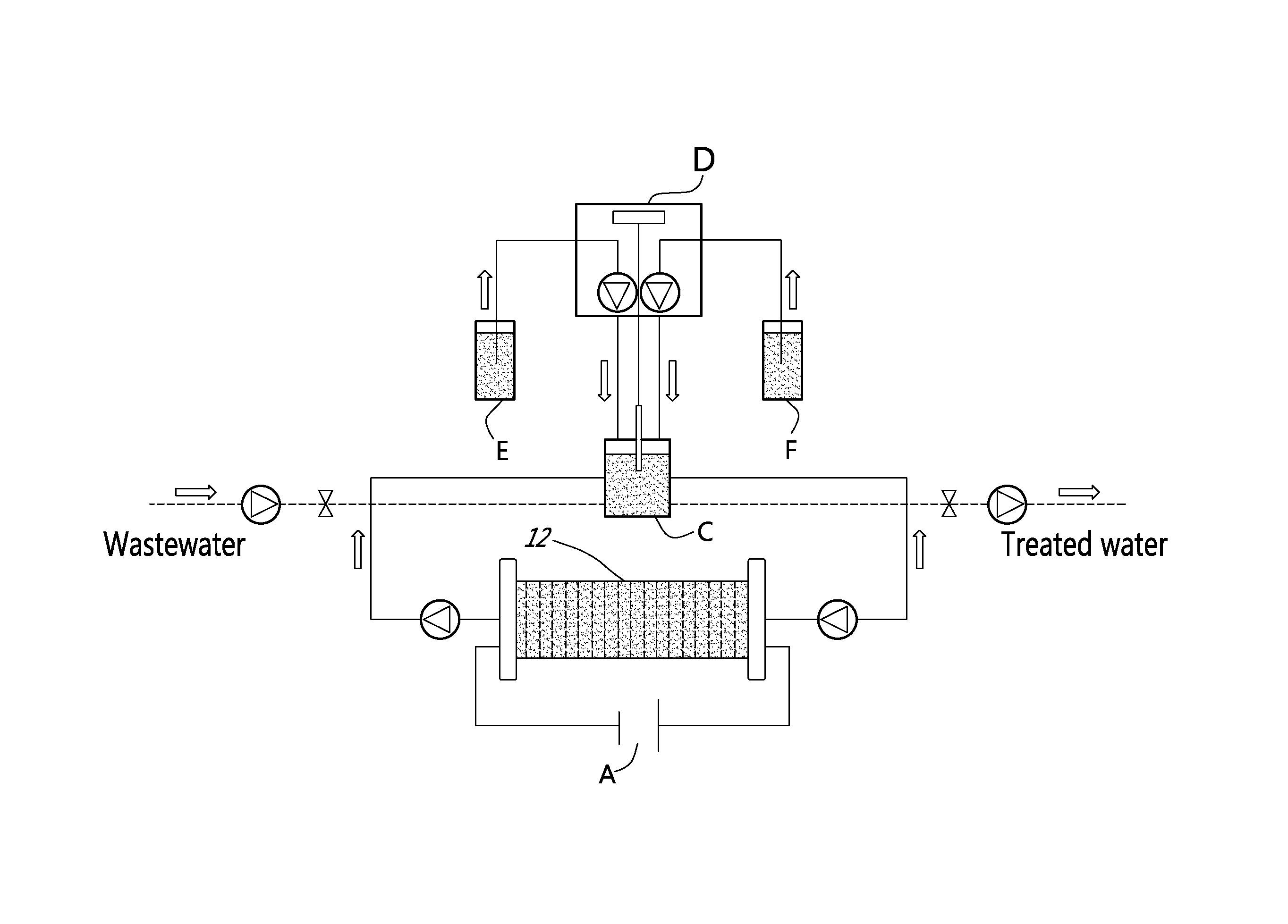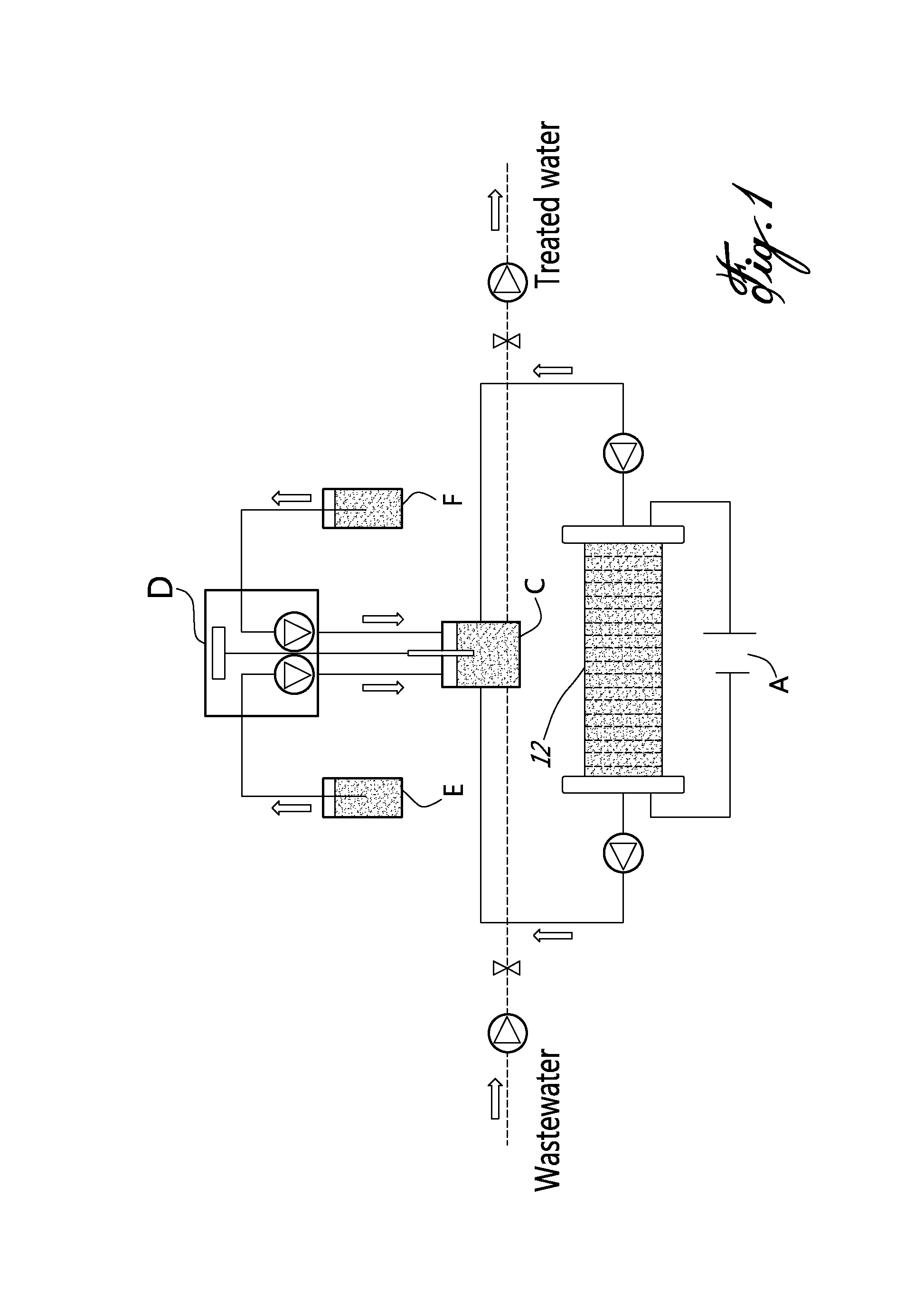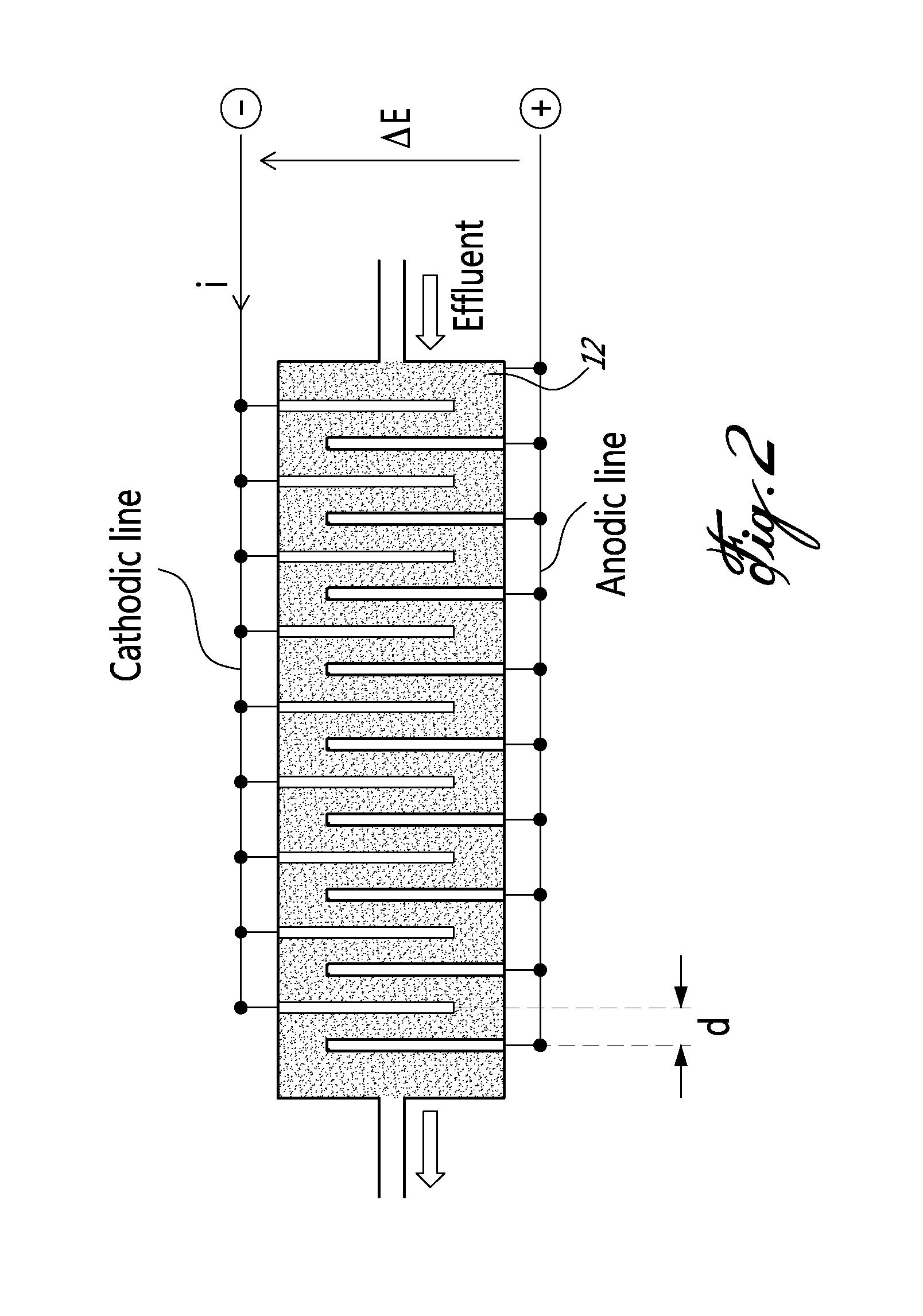Method and system for electrochemical removal of nitrate and ammonia
a technology of nitrate and ammonia, applied in the direction of electrical-based machining apparatus, water contaminants, water/sludge/sewage treatment, etc., can solve the problems of slow kinetics and generation of byproducts, adverse effects on human health and aquatic ecosystems, and low efficiency of paired electrolysis, so as to achieve high electroactivity and high corrosion resistance. , the effect of high corrosion resistan
- Summary
- Abstract
- Description
- Claims
- Application Information
AI Technical Summary
Benefits of technology
Problems solved by technology
Method used
Image
Examples
Embodiment Construction
[0021]The present invention is illustrated in further details by the following non-limiting examples.
[0022]In a nutshell, there is provided a method and a system for accomplishing conversion of both nitrate and ammonia into nitrogen in a membrane-less multi-electrode electrolyzer comprising electrodes having a high corrosion resistance combined with excellent electroactivities for nitrate reduction to ammonia, at the cathode side, and ammonia oxidation to nitrogen in presence of chlorine, at the anode side.
[0023]According to an embodiment of an aspect of the present invention, the system comprises an undivided flow-through electrolyzer. The electrolyzer is thus devoid of membrane, and operates in a single step, which may be advantageous in connection with the removal of nitrate and ammonia over a wide concentration range (from mg / L to g / L) with a low energy consumption.
[0024]The electrolyzer comprises electrodes that are highly resistant to corrosion and highly selective for reducin...
PUM
| Property | Measurement | Unit |
|---|---|---|
| concentration | aaaaa | aaaaa |
| concentration | aaaaa | aaaaa |
| current density | aaaaa | aaaaa |
Abstract
Description
Claims
Application Information
 Login to View More
Login to View More - R&D
- Intellectual Property
- Life Sciences
- Materials
- Tech Scout
- Unparalleled Data Quality
- Higher Quality Content
- 60% Fewer Hallucinations
Browse by: Latest US Patents, China's latest patents, Technical Efficacy Thesaurus, Application Domain, Technology Topic, Popular Technical Reports.
© 2025 PatSnap. All rights reserved.Legal|Privacy policy|Modern Slavery Act Transparency Statement|Sitemap|About US| Contact US: help@patsnap.com



